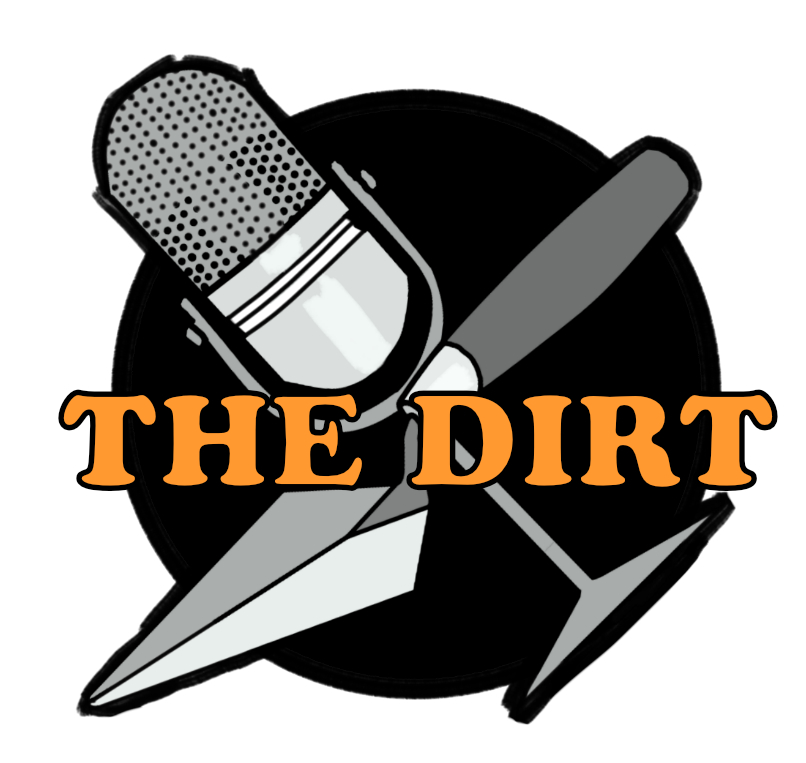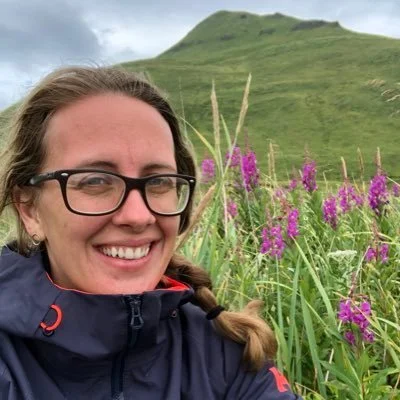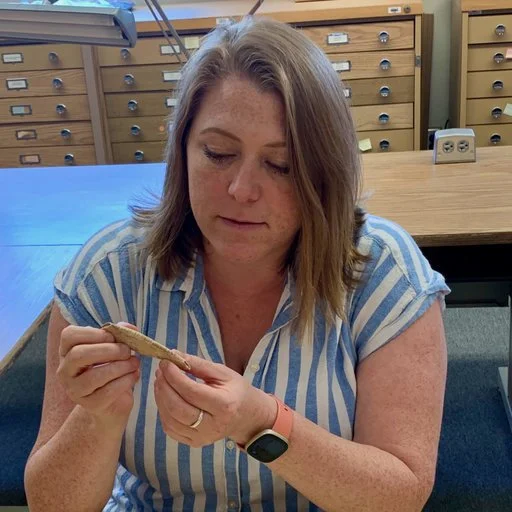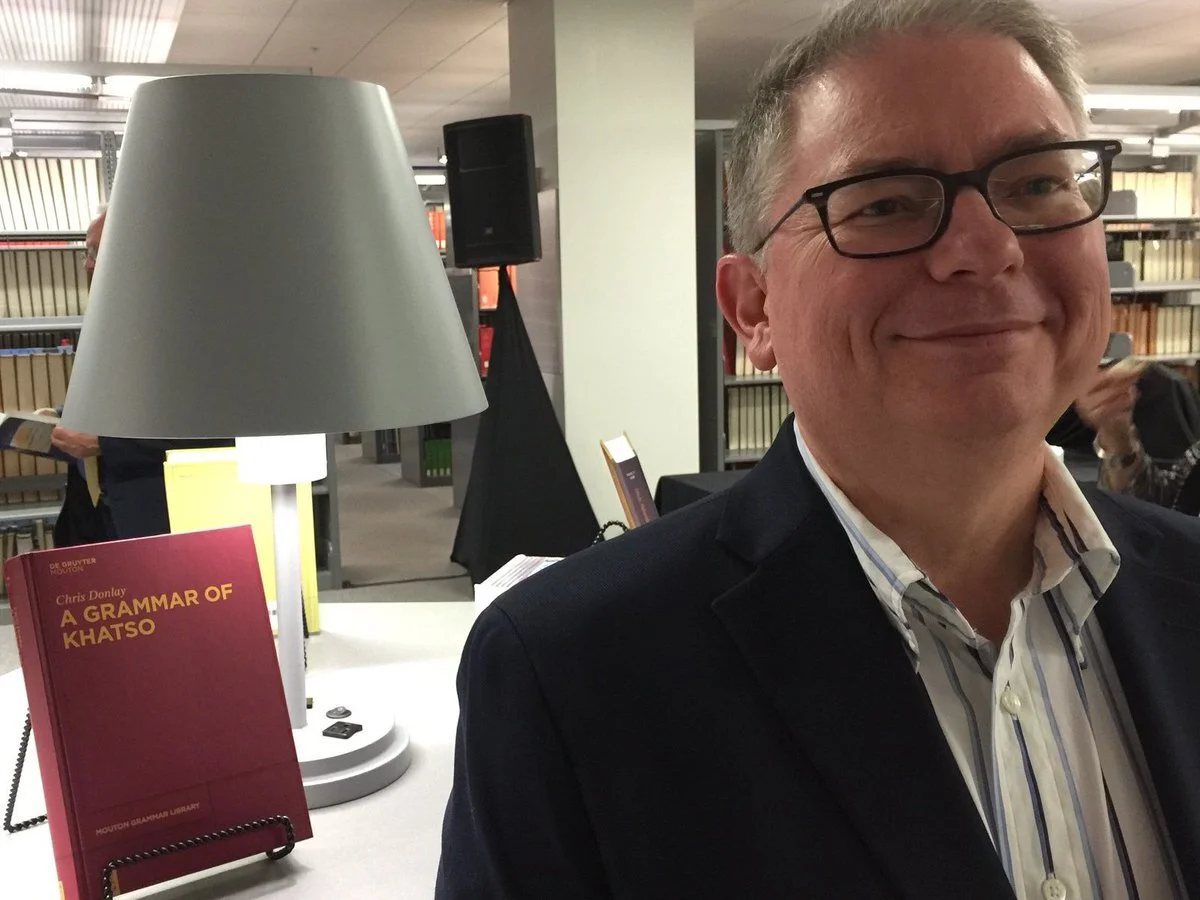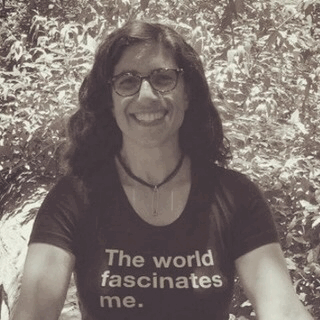Candace Lukasik is an anthropologist and ethnographer whose research focuses on the intersections of transnational migration, religion, race, and empire. We learned so much in this episode! It's always such a treat to have a guest with a perspective from one of the anthropological fields other than archaeology. We hope you enjoy it and we hope it gives you all lots to think about!
Read MoreAhoy! We’re still at sea, the ocean is still None of Our Business, and yet we’re learning so much about it! This week, we’ve got a special guest to guide us. Christine Bassett is currently a program coordinator for the National Oceanic and Atmospheric Administration’s Weather Program Office (NOAA). Christine collects data from ancient Arctic shell middens to reconstruct climate and sea ice levels for archaeological sites in the Aleutian islands. Tune in to learn how she’s turning thousand-year-old clams into a climate thermometer!
Read MoreThere are surprising intersections between video game creation and archaeology, and that, of course, comes along with the good, the bad, and the ugly parts of mining ancient history for content creation. Neither Anna nor Amber really grew up playing video games, so we are extremely lucky to have a guest expert, Dr. Bill Farley, Associate Professor of Anthropology at South Connecticut State University. Bill will be our guide on the subject. The Toad to our Mario Party. Right? That’s a thing, right?
Read MoreWe’re a Wednesday show now! This week, Amber's under the weather, so Anna goes solo with special guest Dr. Naomi Martisius (aka Dr. Bonesaw). Naomi tells us how she deciphers clues about human behavior by looking at tiny tiny VERY tiny portions of animal bone surfaces under a microscope. We’ll get into her undergraduate discovery that re-wrote a part of prehistory (no, really), and her work on the extremely cool bone artifacts and ornaments from Bacho Kiro Cave, in what is today Bulgaria.
Read MoreWe dive into Dr. Samuel Redman’s latest book, Prophets and Ghosts: The Story of Salvage Anthropology. Amber and Anna (mostly Amber) have lots of questions about the seemingly paradoxical 19th- and 20th- century urge by American scholars to “rescue” objects and even human remains from “disappearing” Indigenous groups. It’s a fascinating window into anthropology viewed as a moral and academic obligation, and the social underpinnings of the development of the discipline in the US.
Read MoreWe’re finally introducing our producer, Jenna Hendrick, in an episode! Jenna has been working with us behind the scenes on our social media posts and some of the nuts and bolts of episode organization for several months now. We chat about popular media portrayals of human life in the Paleolithic, and how those affected popular perception of the human past.
Tune in to the full episode on Patreon for our best/worst Pop-Paleo Awards show!
Read MoreAnna and Amber are joined by wonderful Special Guest, Kyle Jordan! Kyle is a disabled Egyptologist interested in themes of religion, magic and identity in the Egyptian world, with a specific focus on the appearance and interpretation of disability in Ancient Egypt and Egyptology as a discipline. We had a wonderful-- and long-- conversation with Kyle about how Egyptians viewed the embodiment of disability, how perception of disability in archaeology has changed (and how it still needs to change), and more.
Read MoreAndrew Gurza is a disabled content creator whose award-winning podcast, Disability After Dark, shines a light on the lived experience of disability in all facets of life. We’ll talk a bit about Andrew’s own story as well as some archaeological examples of how disability was viewed in the past and how it is interpreted in the present.
Read MoreDr. Danielle Macdonald specializes in the prehistory of Western Asia and the stone tools that people made and used in their everyday lives. That’s right, three years in, we’re finally doing an episode on lithics! We’ll also talk about Danielle’s path to anthropology and her ongoing work at the site of Kharaneh IV in what's today Jordan.
Read MoreThis week, Anna and Amber sit down with archaeologist, podcaster, and member of the Pawnee Nation of Oklahoma, Carlton Shield Chief Gover. We talk about his path to archaeology, an Indigenous perspective on archaeology as history and heritage, how to prank your site supervisor, and more!
Read MoreAnna and Amber are joined this week by Allyson Blanck, a Classical archaeologist and advocate for accessibility and inclusivity in the field. Learn about best practices for accommodating archaeologists with disabilities in the field, the changes that are already underway in the discipline, and how much farther we need to go. Plus, some excellent dog content and a discussion of ancient cranial surgery!
Read MoreElla al-Shamahi is a paleoanthropologist, National Geographic Explorer, evolutionary biologist, stand-up comic, and author of the new book The Handshake: A Gripping History. And NOW, she's a guest on The Dirt Podcast! We chat about how she came to anthropology, learn about the biological and cultural roots of the handshake, about science's Geography Problem, and what it's like to be a capital-E Explorer.
Read MoreAnna and Amber sit down with Rachel Watkins, a biological anthropologist and scholar-activist whose research centers on social and biological histories of Black Americans in the 19th and 20th centuries. Learn about the social history of biological anthropology, the exemplary case studies with which Dr. Watkins has worked, why you shouldn't discount the creepy things small children sometimes do, and so much more!
Read MoreIt's a bonus episode! Anna and Amber are joined by some of the wonderful folks at One Star Archaeology (Twitter: @1starchaeology, Instagram: @onestarchaeology) for dramatic readings of internet reviews of archaeological sites.
Read MoreSeasons greetings! And by that we mean we're wrapping up 2020 by sitting down with Dr. Chris Stantis, who uses stable isotope analyses to learn how people lived in the ancient past. We discuss the real story of the Hyksos Dynasty during the Second Intermediate Period in Egypt. Were they the pushy invaders they've been made out to be? Or is there more to the story? (There's more to the story). Not only ALL THIS, but Dr. Stantis convinces Amber and Anna to love those pesky little atoms--stable isotopes!
Read MoreAnna and Amber sit down with Dr. Rebecca Wragg Sykes, Paleolithic archaeologist and author of the book "Kindred: Neanderthal Life, Love, Death, and Art." We talk about Rebecca's education and her love for all things ancient, and she resolves some common misconceptions about our Neanderthal cousins. "Kindred" just came out in the States, so pick up a copy of your very own for an amazing synthesis of current Neanderthal knowledge.
Read MoreAnna and Amber finally get some much-needed linguistics help from Dr. Chris Donlay. We talk about his unconventional academic path and his work recording and studying endangered languages! Plus, he schools us on how language shapes our perception of the world, how old spoken language *might* be, and what to do with a linguistics degree.
Read MoreThe second half of Anna and Amber's conversation with librarian and research guru Tasha Bergson-Michelson. This week, we chat about the value of critical thinking, combatting misinformation in our social circles, and how to hack Wikipedia for the greater good. Plus, some unexpected facts about ice cream parlors and fog!
Read MoreAmber and Anna sit down to chat with the incomparable Tasha Bergson-Michelson, a librarian and educator. Research is a skill that is learned, and Tasha teaches us how to up our game. We learn about the process of good research, how to avoid sketchy sources, and the best ways to get started on any research project. We enjoyed talking with Tasha so much that we did it a whole bunch! Next week, we'll bring you the second half of our conversation.
Read MoreThese hips don't lie. Amber and Anna talk with paleoanthropologist Mayowa Adegboyega about her research on the evolution of the pelvis. Mayowa also gives us some insights on the experience of being Black in academia, and how she uses science communication and the occasional silliness to make anthropology more accessible.
Read More